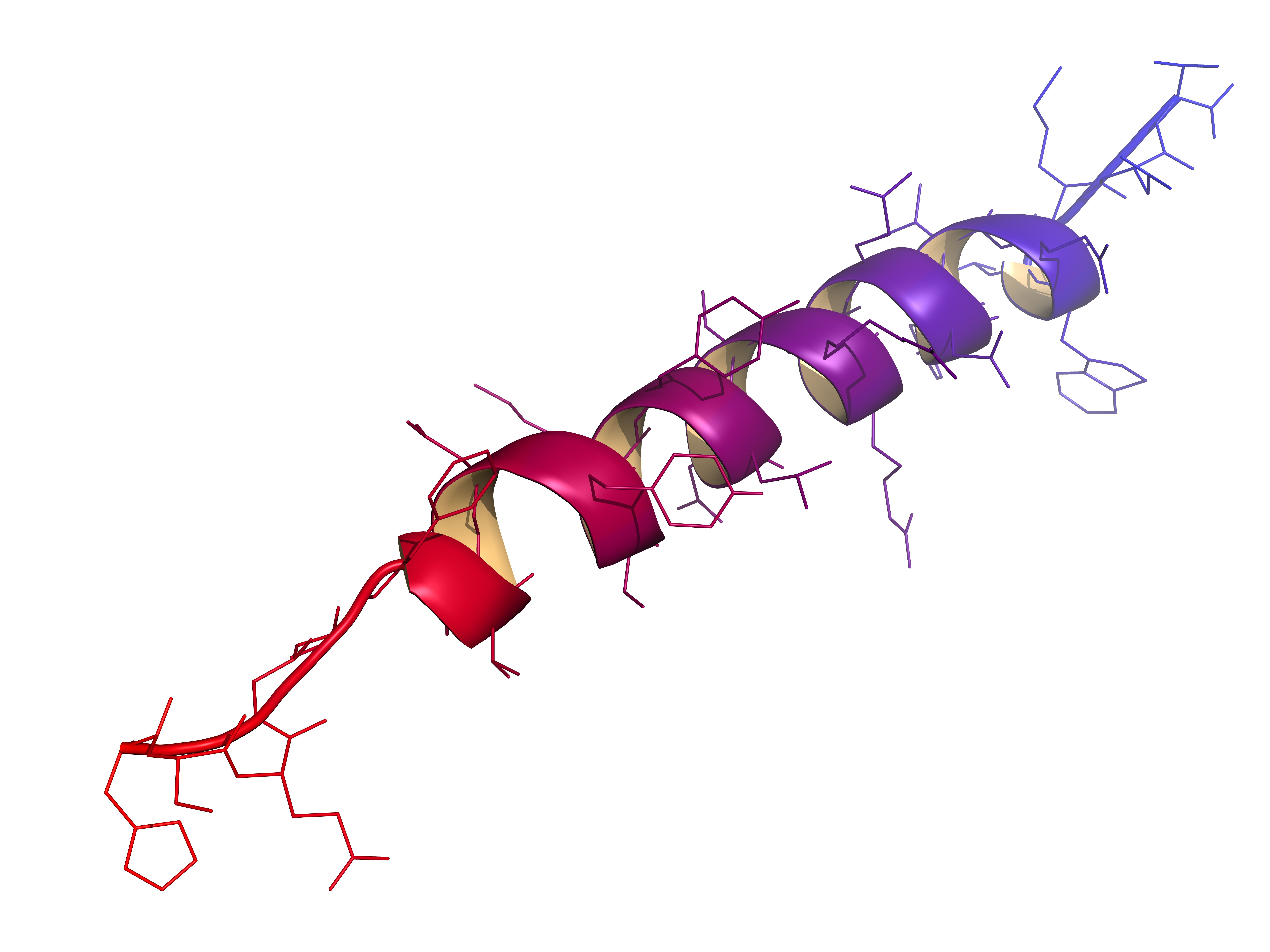New Strategy for Assessing Peak Purity of Pharmaceutical Peptides Using 2D-LC–MS
In the first of a two-part series, a recent study discusses a new strategy for assessing the peak purity of pharmaceutical peptides analysis using 2D-LC–MS.
A team of researchers led by Patrik Petersson from Novo Nordisk A/S in Måløv, Denmark, has developed a new strategy for assessing main peak purity in the analysis of pharmaceutical peptides. Their findings are published in the Journal of Chromatography A, in a two-part series (1). The focus of Part I is on the selection of columns and mobile phases for reversed-phase (RP) separations using two-dimensional liquid chromatography coupled to mass spectrometry (2D-LC–MS), and particularly peptide isomer selectivity.
Glucagon peptide hormone molecule, chemical structure | Image Credit: © molekuul.be - stock.adobe.com

Currently, chromatography with ultraviolet (UV) or mass spectrometry (MS) detection is the most important analytical technique for the analysis of intact peptides and their related impurities, as well as enzymatic digests of proteins and monoclonal antibodies. However, the inability of LC–MS to differentiate compounds with identical mass to charge ratio (m/z) such as isomers is a significant challenge. The team's 2D-LC–MS-based strategy addresses this issue and provides guidance on developing a 2D-LC–MS method from start to finish for the analysis of main peak purity of therapeutic peptides.
The 2D-LC–MS method described in the study is used to assess the peak purity of pharmaceutical peptides. The method involves using reversed-phase (RP) separations in both dimensions, and particularly peptide isomer selectivity. The authors evaluated different column and mobile phase combinations to determine the best options for developing a new method. The study found that screening a set of four columns and four volatile mobile phases with differing characteristics is adequate to both cover the selectivity space and yield good separation performance.
To evaluate their new method, the researchers screened 30 column and mobile phase combinations for general separation performance, isomer selectivity, and peak shape using forcibly degraded peptide samples and mixtures of synthetic diastereomers. Based on their findings, screening a set of four columns and four volatile mobile phases with differing characteristics is adequate to both cover the selectivity space and yield good separation performance when developing a new method.
For the investigation of peptides with a molecular weight of less than 10 kDa, the researchers recommend a second-dimension separation comprising a C8/C18 column possessing no ionic functionality, and an acetic acid and ammonium acetate mobile phase buffered at pH 5, to provide good selectivity at 25 °C for peptide isomers. They also found that trifluoroacetic acid can reduce selectivity differences between columns of diverse properties and improve peak shape for very large peptides.
Retention data for 29 diverse peptides measured in this study using a variety of column and mobile phase conditions are consistent with the classification of these various chromatographic conditions using the previously reported Peptide RPC Column Characterization Protocol.
The results presented in this series of papers provide the guidance needed to develop a 2D-LC–MS method for the analysis of main peak purity of therapeutic peptides, and could ultimately lead to better quality control for pharmaceuticals. Part II of the series will focus on the use of retention modeling for the rapid and accurate selection of the shallow gradients required to obtain sufficient peptide isomer retention and separation in the second dimension.
Reference
(1) Petersson, P.; Buckenmaier, S; Euerby, M. R.; Stoll, D. R. A strategy for assessing peak purity of pharmaceutical peptides in reversed-phase chromatography methods using two-dimensional liquid chromatography coupled to mass spectrometry. Part I: Selection of columns and mobile phases. J. Chromatogr. A 2023, 1693, 463874. DOI: https://doi.org/10.1016/j.chroma.2023.463874
Silvia Radenkovic on Her Research and Passion for Scientific Collaboration
April 3rd 2025Radenkovic is a PhD candidate at KU Leuven and a member of FeMS. Her research focuses on inborn metabolic disorders (IMD), like congenital disorders of glycosylation (CDG), omics techniques such as tracer metabolomics, and different disease models.
Advances in Non-Targeted Analysis for PFAS in Environmental Matrices
March 27th 2025David Megson from Manchester Metropolitan University in Manchester, UK, spoke to LCGC International about the latest developments in non-targeted analysis (NTA) of per- and polyfluoroalkyl substances (PFAS) in environmental matrices based on a recent systematic review paper he has collaboratively published (1).
Study Explores Thin-Film Extraction of Biogenic Amines via HPLC-MS/MS
March 27th 2025Scientists from Tabriz University and the University of Tabriz explored cellulose acetate-UiO-66-COOH as an affordable coating sorbent for thin film extraction of biogenic amines from cheese and alcohol-free beverages using HPLC-MS/MS.
Quantifying Microplastics in Meconium Samples Using Pyrolysis–GC-MS
March 26th 2025Using pyrolysis-gas chromatography and mass spectrometry, scientists from Fudan University and the Putuo District Center for Disease Control and Prevention detected and quantified microplastics in newborn stool samples.






